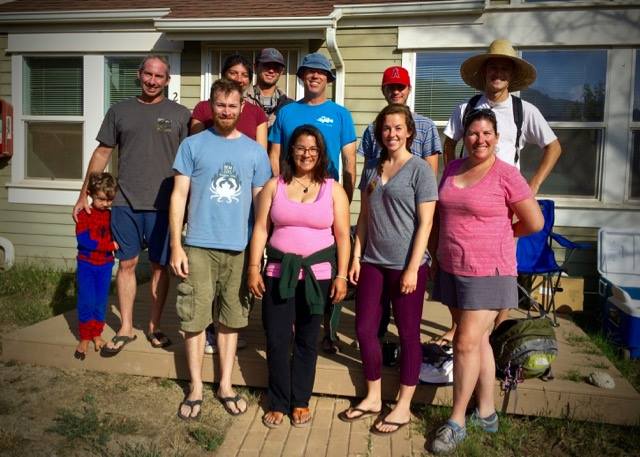By Stephen Pang, Ichthyology Lab 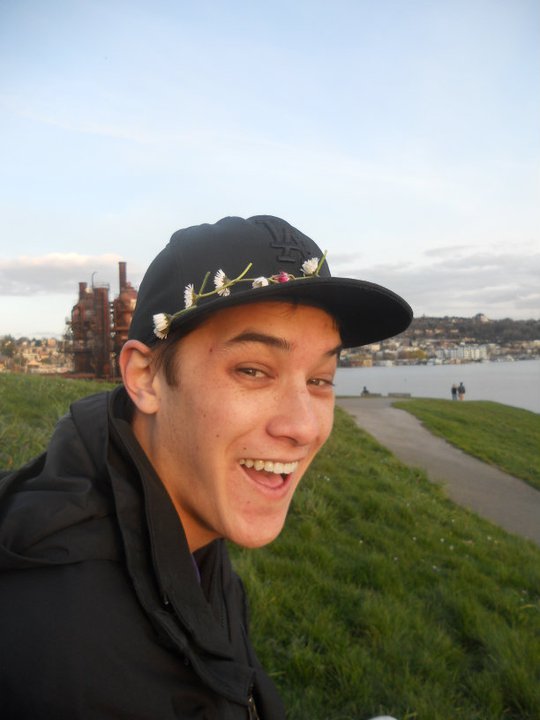
This past summer began like any good summer does…with a trip to my favorite taco stand. After driving south from Monterey, I had finally arrived in Los Angeles. Five hours of driving (and waking up far earlier than I would have preferred) had caused me to develop a serious hankering for some carne asada topped with onion and cilantro. Three tacos later, I was finally full and continued south to San Pedro where I made my way aboard the Miss Christi. This 45-foot boat is owned and operated by the University of Southern California (USC) and would be taking me to my home for the summer, Santa Catalina Island (often just called Catalina).
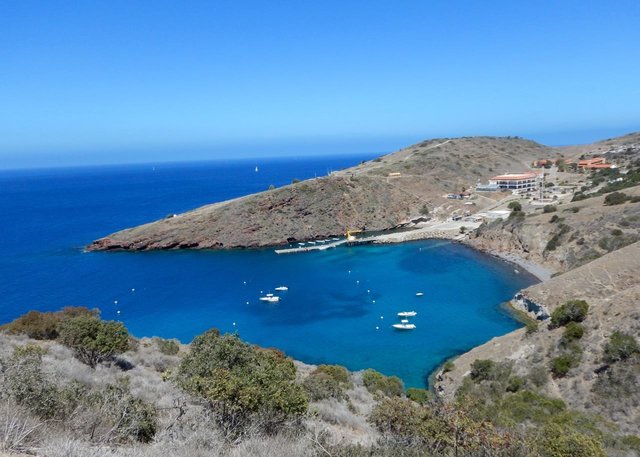
Two hours and 22 miles later, the Miss Christi was pulling into Big Fisherman’s Cove on the northeast end of Catalina. This cove is home to the Wrigley Marine Science Center (WMSC), an environmental research and education facility owned by USC. For the next three months, I would be working on my thesis research here.
My work this summer focused on how size-selective harvesting affects the reproductive output of sex-changing fish. Specifically, I’m interested in fish that are called protogynous hermaphrodites. This is a fancy way of saying that these fish are born female and change into males later in life. In the species that I worked with this summer, blackeye gobies (Rhinogobiops nicholsii), this sex change is largely governed by social cues. Typically, a single male will have a harem of females that he spawns with. When the male is removed, the most dominant (usually the biggest) female will change sex and become the new male.

Many commercial and recreational fisheries tend to target the largest fish in a population. This is especially problematic with protogynous hermaphrodites since most of the largest individuals in a population are male. This size-selective fishing tends to skew gender ratios in favor of females in exploited populations. My research is trying to figure out at what gender ratio do males start to limit reproductive output (i.e. populations start to produce less new fish). Do we start to see this limitation when there is 1 male for every 5 females? What about 1 male for every 20 females? This is what I’m trying to figure out.
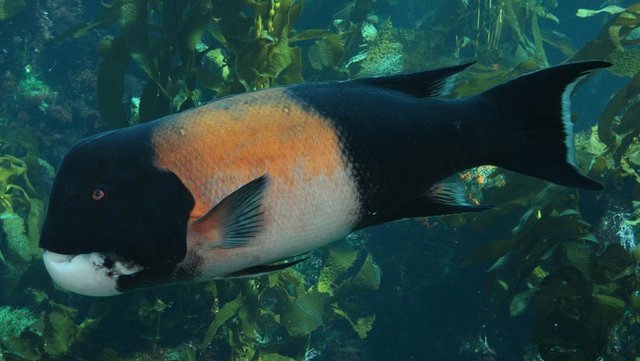
To test this, artificial reefs were constructed and fish were placed on each reef. Each reef had different gender ratios to simulate varying levels of exploitation (fish with fewer males were more “exploited”). The fish would then (in theory) lay their eggs which would then be examined for fertilized and unfertilized eggs (unfertilized eggs can be distinguished from fertilized eggs based on their cloudy, white appearance). The number of unfertilized and fertilized eggs would then be compared between the different gender ratios. The higher the proportion of unfertilized eggs, the stronger the male limitation.

So first things first, we had to build our reefs. A total of 20 reefs were constructed that consisted of cinder blocks and rocks. We collected our rocks from a nearby beach and dropped them (along with our cinder blocks) onto the seafloor in buckets attached to ropes. This was easily the most labor intensive part of the project but was also incredibly gratifying to see these reefs get built from nothing. Cages made out of wire mesh were placed over these reefs to prevent predators from eating our blackeye gobies. We also placed overturned terra cotta flowerpot saucers on each reef. Blackeye gobies readily lay eggs on the underside of these which would make it easy to quantify the number of fertilized and unfertilized eggs.


Once the reefs were built, we had to put fish on them! Using hand nets and SCUBA gear, we went out to local reefs to collect fish from native populations. Fortunately, blackeye gobies aren’t the brightest fish in the sea and could be easily caught by slowly placing our nets over them as they sat on the sand (they like to hangout on the interface between rocky reef and sand). For me, this was the most fun part of the whole project. By the end of the summer, I believe we had caught around 1,000 blackeye gobies. Suffice to say, I was counting blackeye gobies rather than sheep as I drifted off to sleep each night.

We would then return to the lab at WMSC where the gobies were tagged using visual implant elastomer (VIE) tags. These VIE tags are a liquid that is injected underneath the skin. After injection, the liquid cures into a pliable solid that can be easily seen through transparent tissue. These tags allowed us to quickly identify the size and sex of each individual. This was important as we would regularly check up on the fish to make sure that the desired gender ratios for each reef were maintained.

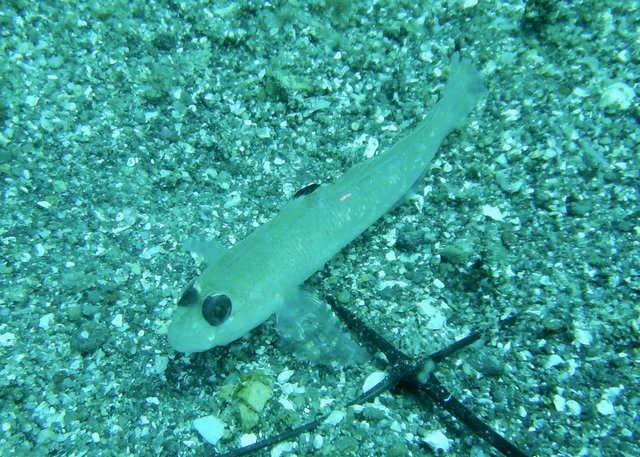
Once tagged, we released our gobies onto our artificial reefs. We had 20 reefs with 20 fish on each reef. We had 10 different gender ratios (each gender ratio is a different “treatment”) which ranged from 1 male:19 females to 10 males:10 females. Each gender ratio was represented on 2 reefs (these are what we call “replicates”). Once the gobies were released on to the reefs the bulk of our work was done! All that was necessary now was to monitor the saucers for eggs and to maintain the desired gender ratios.
Unfortunately, our gobies didn’t want to cooperate with us. They weren’t laying eggs and without eggs (to compare the proportion of unfertilized eggs between different reefs) we didn’t have any data! We aren’t 100% sure why they weren’t spawning but the leading theory is that the water was too warm. There were some days that temperatures on the bottom were as warm as 70F! That’s just how things go in this field sometimes though…it doesn’t always work out.
While everything may not have gone according to plan this past summer, I still learned a bunch. While I may not have collected any data that I can use for my thesis, I learned what will and what won’t work for this project. I learned how I can streamline the project and I have no doubt that everything will run much smoother in the future. And the most important thing of all, I learned that my advisor has some wicked moves on the dance floor. I look forward to returning to Catalina Island this summer to continue my thesis research.
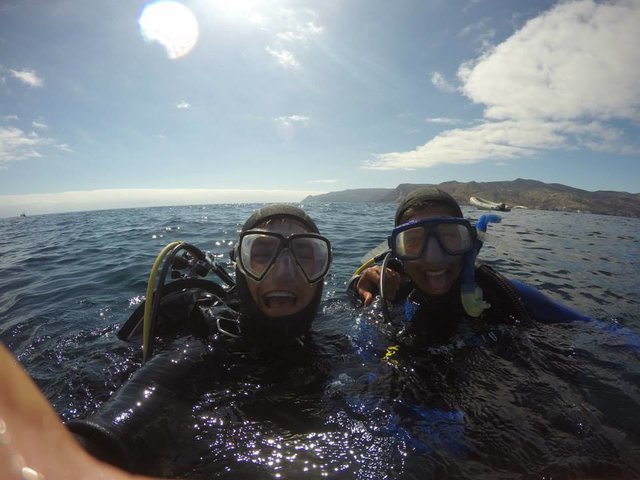
Before I sign off, I wanted to thank Dr. Mark Steele, Dr. Mia Adreani, Dr. Will White and my awesome advisor, Dr. Scott Hamilton, who were the reason this project got off the ground in the first place. My research is part of a larger NSF project that the four of them are conducting that will be taking place at Catalina over the next two years. I’d also like to thank our wonderful assistant researchers/volunteers: Alexis Estrada, Tyler Gerome, Katie Neylan, and Erika Nava. They were out there every day with us busting their butts to get this work done. And last but not least, I’d like to thank the Wrigley Marine Science Center and the wonderful people that work there. Without all of these people, none of this would have been possible. See you guys next summer!
